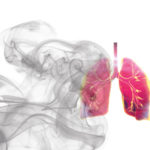Fine dust increases the risk of autoimmune diseases
What do rheumatism and fine dust have to do with one another? According to a study by the University of Verona, people exposed to high concentrations of fine dust suffer more often from autoimmune diseases than people who breathe healthier air. The study provides the first indications of a link between exposure to fine dust and disease. Another study by Danish scientists supports the Italians’ hypothesis. In this study, a team from Aarhus University demonstrated that long-term exposure to fine quartz dust increases the likelihood of rheumatic diseases. These results are also interesting for welders, as they are disproportionately often confronted with fine dusts in their working lives.
For the Italian study, rheumatologist Giovanni Adami used data from more than 81,000 patients. The data comes from a web-based risk calculator for osteoporotic fractures. More than 3,500 Italian doctors calculated the risk of their patients developing osteoporosis and suffering a fracture as a result in the period between June 2016 and November 2020. The doctors also had to indicate whether their patients suffered from an immune-mediated inflammatory disease such as rheumatism.
Smoking increases the likelihood of rheumatoid arthritis
A link between smoking (that is also associated with exposure to fine dust) and rheumatoid arthritis was already established by medical experts in a Swedish study in 2014. In the meta-analysis that examined data from 1966 to 2013, the researchers showed that the risk of disease increased by 26 percent for 1 to 10 pack-years and by 94 percent for more than 20 pack-years. Pack-years is a unit that describes the dose of inhaled smoke of a cigarette smoker (cigarette packs per day × smoker years).
Data from more than 81,000 subjects
Against this background, the Italians asked themselves whether the fine dust pollution in the normal air we breathe – independent of smoking – also increases the likelihood of rheumatic disease. Adami and his colleagues correlated data from local measuring stations with the data from the 81,000 patients. Since there are 617 monitoring stations in 110 Italian provinces, the team had sufficient data to determine the average long-term exposure to fine dust: From 2013 to 2019, it was 16 µg/m3 for fine dust PM2.5 and 25 µg/m3 for fine dust PM10.
12 percent higher risk
Adami found an increase in all immune-mediated inflammatory diseases if there was long-term exposure to fine dust: The risk of disease increased by 12 percent with exposure to PM10 greater than 30 µg/m3 and 13 percent with exposure to PM2.5 greater than 20 µg/m3. In addition, Adami demonstrated that every 10 µg/m3 increase in PM10 exposure was associated with a 7 percent greater risk. However, the study also reveals methodological weaknesses. For example, information on the duration and severity of the patients’ immune-mediated inflammatory diseases was missing. These results can therefore only provide indications for further studies in this area. The associations between fine dust pollution and rheumatic diseases have been the subject of intensive research for years.
Diseases up to 53 percent more frequent
In Denmark, a team led by occupational physician Henrik Kolstad demonstrated a greater risk of rheumatism with increasing exposure to quartz dust. The researchers from Aarhus University examined data from three million Danes who worked in an industry where they were exposed to fine quartz dust for at least one year between 1977 and 2015. Kolstad used a matrix to establish a direct link between their exposure to quartz dust and the four most common rheumatic diseases (systemic sclerosis, rheumatoid arthritis, systemic lupus erythematosus and small vessel vasculitis). The result was that: Each 50 µg/m3 increase in exposure increased the risk of disease by 7 percent. The men with the highest exposure were 53 percent more likely to develop rheumatism than their counterparts or women who were exposed to low or no concentrations of quartz dust. They also had a greater risk of one of the four rheumatic diseases included in the study. In women, too, the risk increased with increasing exposure.
Welders have a high risk of falling ill
Both studies suggest that the risk of rheumatic disease increases depending on the duration and intensity of exposure to fine dust. Welders are therefore already exposed to a greater risk of disease due to their occupation. That’s why precautions to minimise this risk, such as the installation of welding fume extraction systems, are of particular importance in protective welding equipment. A torch-integrated extraction system provides very effective protection against health-endangering fine dust, since it is applied directly at the point of origin. The fine dust is automatically captured during welding and cannot escape into the ambient air. Source extraction using extraction hoods is also a very effective collection method. It is important to make welders aware of the importance of actively tracking the hood in order to protect themselves from welding fumes. In that sense, flange-shaped hoods are particularly suitable, as they capture up to 40 % more welding fumes than conventional hoods and hence need to be readjusted less frequently.





